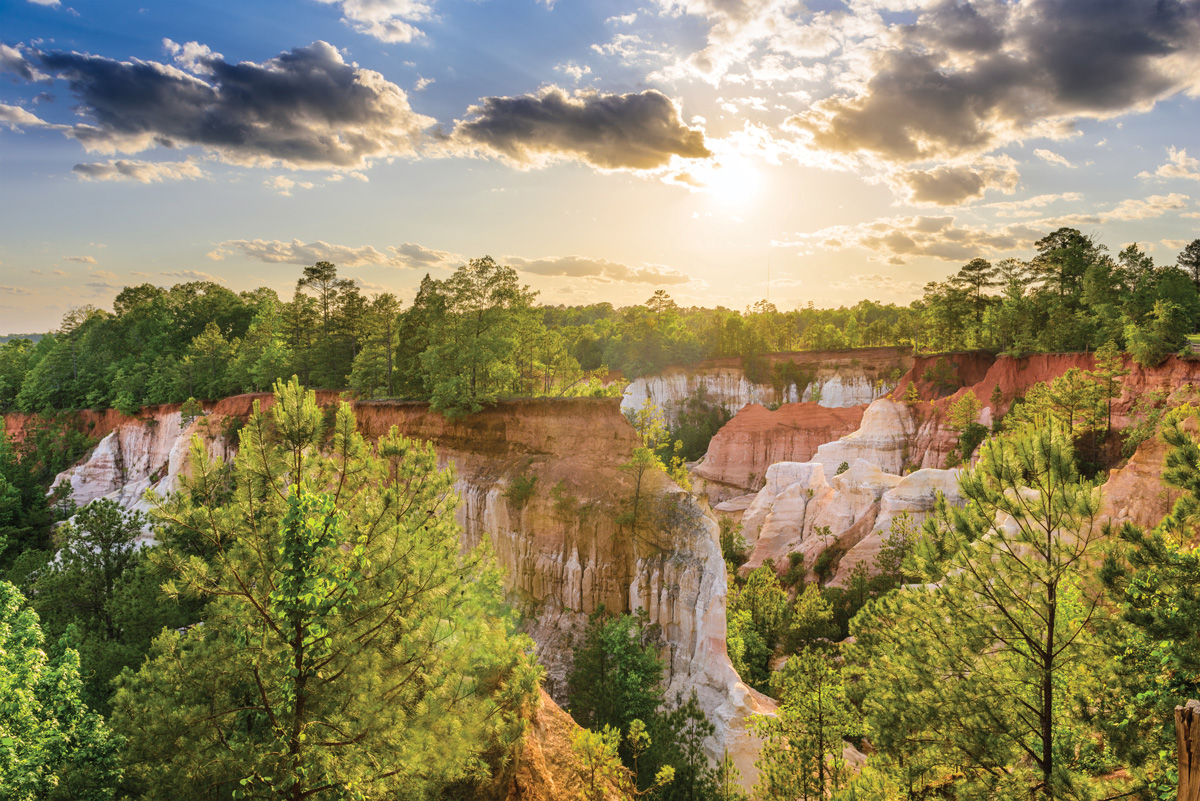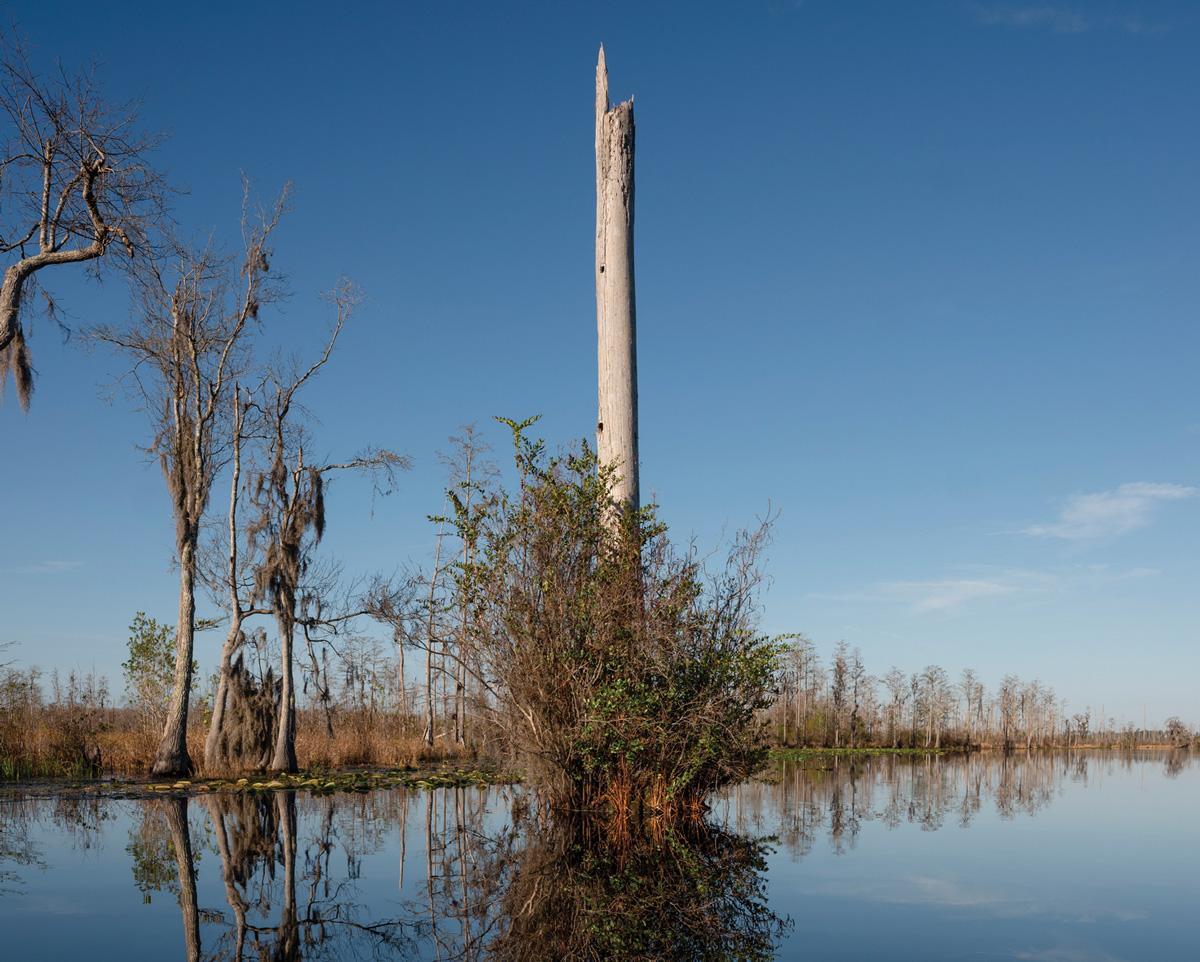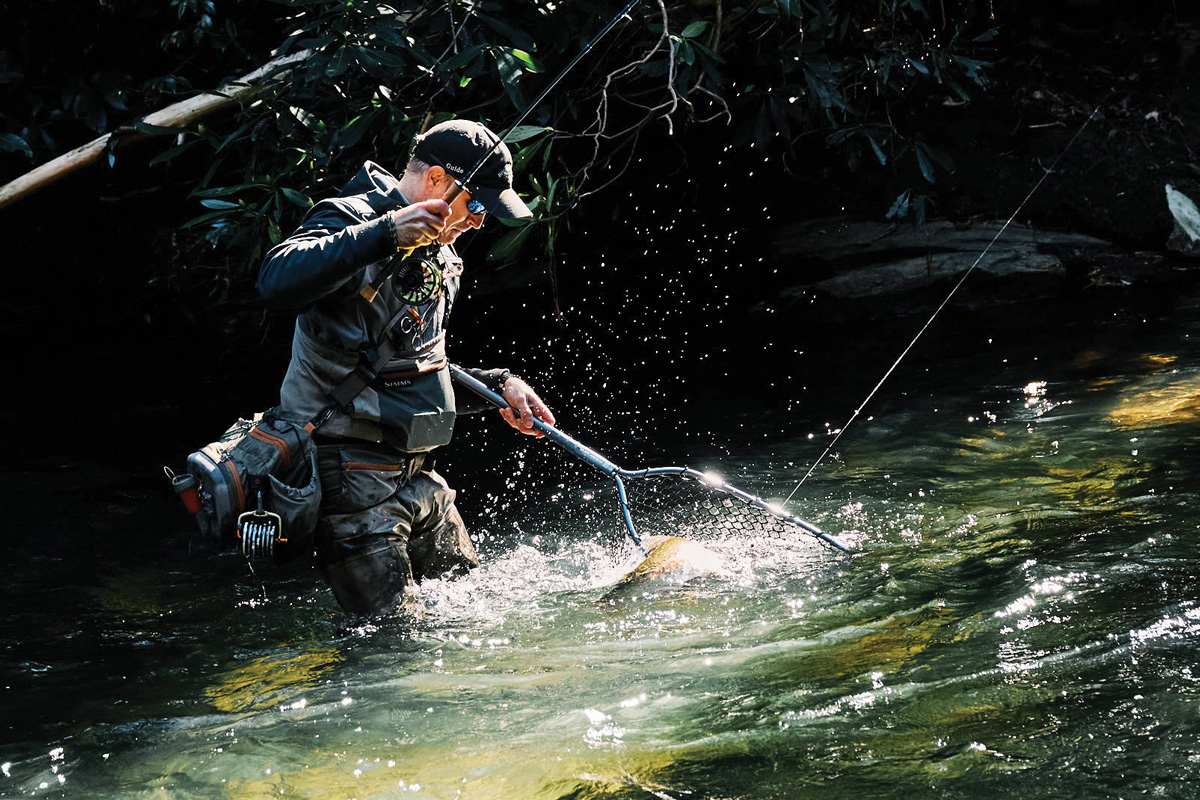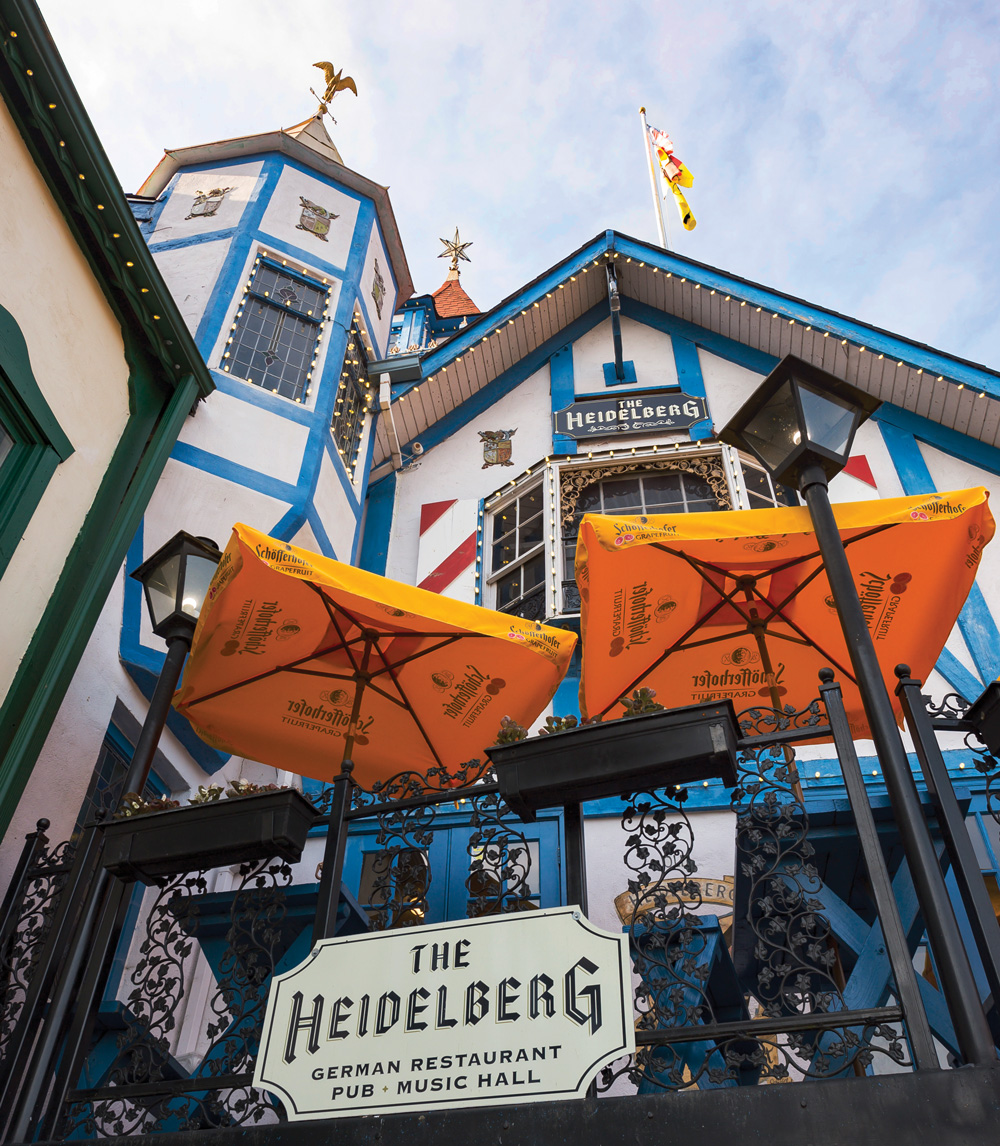
Photography by Getty Images
PROVIDENCE CANYON STATE PARK
Georgia’s own “Little Grand Canyon” may be the result of agricultural malfeasance, not geology—but it’s no crime to enjoy the accidentally beautiful results. Providence Canyon was formed in the early 19th century when decades of poor farming practices in southwest Georgia eroded the soil to dramatic effect. Water carved gullies into the soft earth, and by the mid-1800s, the landscape had been transformed into a series of gorges up to 150 feet deep. Yesterday’s mistakes make for breathtaking hiking today, with the sunset colors of the gorge walls juxtaposed against the vivid green of Georgia pines and laurel bushes. It’s not an endorsement of poor land management when we say that Providence Canyon—named for a church that collapsed in the erosion, later rebuilt nearby—is worth a visit.
A steep, short half-mile hike will bring you down to the floor, where you can explore nine canyons. The Canyon Loop Trail, two and a half miles long, will take you through all of them; for a longer hike, you can add the seven-mile Backcountry Trail that peels off into a forested area, where several smaller canyons are visible but not accessible for hiking. Visitors can camp at designated sites inside Providence Canyon: The state park offers three pioneer campsites and six backcountry sites (carry in and out all your gear, including water).

Photograph by David Walter Banks
OKEFENOKEE NATIONAL WILDLIFE REFUGE
This pristine, awe-inspiring preserve is the largest blackwater swamp in North America and one of the seven natural wonders of Georgia. The Okefenokee offers miles of water trails for canoeing, kayaking, or chartered motorboat touring. It’s bordered by native plants and trees and chock-full of birds, alligators, and other wildlife. Stay overnight at a cottage or campsite; some sites are simple platforms built deep inside the swamp for a truly immersive experience.
The Okefenokee—or “Land of Trembling Earth,” the name given this place by the native Muscogee/Creek tribe—covers a whopping 354,000 acres, so give yourself several days to explore its natural beauty. At each of the swamp’s five entrances, you’ll find a range of landscapes and options to explore. At the Suwannee Canal Recreation Area, on the preserve’s east side near Folkston, Okefenokee Adventures offers boat tours, kayak and canoe rentals, and guided excursions, including fully equipped camping trips; land lovers may prefer a bike tour around Chesser Island, where four generations of the Chesser family grew up inside the swamp, or a hike on the boardwalk trails. On the north end, Stephen C. Foster State Park offers campsites and cottages, as well as boat tours and rentals. You can launch your own vessel—canoes, kayaks, and small motorboats under 10 horsepower—from any of the preserve’s entrances. The Okefenokee is under constant threat from mining interests: Visit the wetlands to see why this natural wonder is worth protecting.

Photography by Peter Frank Edwards
FLY FISHING ON THE SOQUE RIVER
While there’s incredible fishing to be found all over Georgia, we’re partial to the unique exhilarations of river fly fishing—and for that, it’s hard to beat trout fishing on the Soque River, just north of Clarkesville. This idyllic river (approximately 30 miles), crystal clear and bordered by sun-dappled mountain laurel, begins on Tray Mountain and meanders through Habersham County, eventually spilling into the Chattahoochee. Its year-round cool waters are optimal for rainbow and brown trout, which are stocked annually by the Georgia Department of Natural Resources and diligently stewarded by the outfitters and landowners that dot the Soque’s banks. Thanks to their efforts, and the catch-and-release practice encouraged here, you have a good chance of catching trophy-sized trout, even on a middling day.
Public fishing is allowed along a one-mile section of the river north of Jackson Bridge on Highway 197. But you may find more successful fishing—and smaller crowds—by paying to fish on private property. Several companies offer half- and full-day excursions on the water, with guided tour options for anglers of all experience levels. We recommended Fern Valley on the Soque for affordable day-use fishing on a breathtaking bend of the river; for a more deluxe experience, book a stay at the well-appointed Brigadoon Lodge and fish to your heart’s content on the lodge’s private water.
![]()

Photograph by Explore Georgia
DETOUR
Before fly fishing, after fly fishing—any time, really, is the right time to visit the whimsically strange town of Helen. This ersatz Bavarian village was built in 1969 as a bid to attract tourism, and it paid off mightily: Helen attracts nearly 2 million visitors every year. Fall is peak season here thanks to the beer-soaked Oktoberfest, which runs from September through early November. You haven’t experienced the full quirkiness of Georgia until you’ve experienced Helen.
![]()
This article appears in our August 2025 issue.
Advertisement




